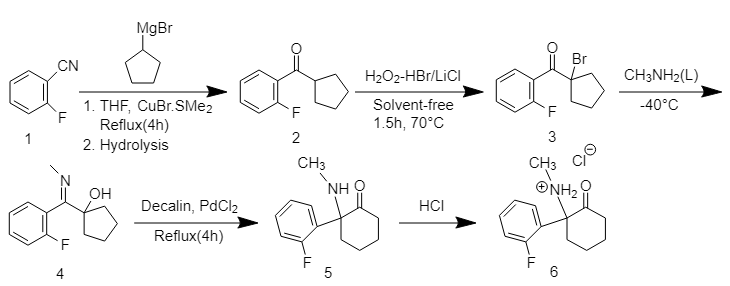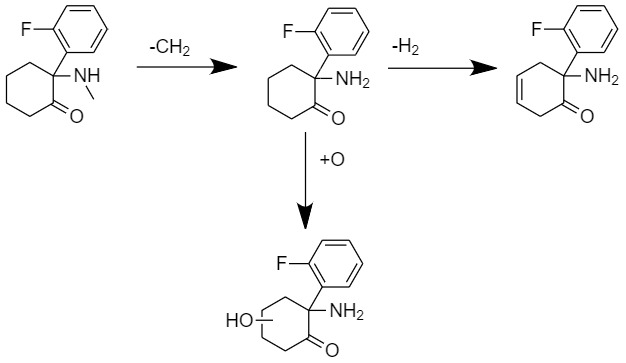Beautiful Plants For Your Interior
Where to Buy 2-Fluorodeschloroketamine Online – Trusted Vendors and Sources
If you’re considering buying 2-fluorodeschloroketamine online, it’s important to choose a reliable source. Numerous vendors offer 2-fluorodeschloroketamine for sale, but selecting a trusted vendor ensures the authenticity and quality of the product. Always check for customer reviews, secure payment options, and clear shipping policies when choosing a 2-fluorodeschloroketamine shop. Whether you’re in the USA, Canada, or internationally, make sure the vendor ships discreetly and complies with all relevant laws.
How to Order 2-Fluorodeschloroketamine – A Step-by-Step Guide for Safe Purchases
Ordering 2-fluorodeschloroketamine online is straightforward, but there are some key steps to ensure a safe purchase. First, select a reputable 2-fluorodeschloroketamine vendor that offers secure payment methods and discreet shipping. Next, confirm whether they ship to your country, whether you’re in the USA, Canada, or elsewhere. Once you’ve placed your order, ensure that the vendor provides tracking information for peace of mind.
Summary
2-Fluorodeschloroketamine (also identified as 2′-Fl-2-Oxo-PCM, Fluoroketamine, and 2-FDCK) is a dissociative anesthetic compound closely related to ketamine. There have been reports of its sale and use as a designer drug in various countries. This substance is an analog of ketamine, with the chlorine group replaced by fluorine. Given its recent emergence, many pharmacological details regarding this compound still need clarification. Nevertheless, reported effects are said to be akin to its parent compound, ketamine.
| Identifiers | |
|---|---|
| IUPAC name | |
| CAS Number | 111982-50-4 |
|---|---|
| PubChem CID | 13771618 |
| ChemSpider | 43515873 |
| UNII | D57WIH0RIT |
| Chemical and physical data | |
| Formula | C13H16FNO |
| Molar mass | 221.275 g·mol−1 |

History
The synthesis of 2-FDCK was initially documented in a 2013 research paper, part of a broader effort to create and assess new anesthetic medications derived from ketamine and its analogs. Ketamine itself was initially introduced in 1964 and received clinical approval in 1970. Subsequently, it has evolved into one of the most significant and widely employed general anesthetics and a well-known recreational substance.
The utilization of 2-FDCK as a research chemical has been documented in multiple countries. Many of these new psychoactive substances (NPS) emerge in the drug market as a means to navigate around existing drug regulations. In 2016, the EMCDDA officially listed 2-FDCK and 65 other new substances. Owing to its recent introduction, there needs to be more research available on the compound at this time.
Chemistry
Structure
The complete chemical nomenclature for 2-FDCK is 2-(2-fluorophenyl)-2-(methylamino)cyclohexan-1-one.
Preparation of 2-FDCK involves the conversion of fluorobenzonitrile.
2-FDCK belongs to a chemical class known as arylcyclohexylamines, which includes various other substances like PCP and ketamine. These compounds share a common structural framework comprising a cyclohexylamine unit with an aryl group attached to the same carbon as the amine. In the case of 2-FDCK, it features an o-fluorophenyl group as the aryl substituent, with a methylated amine group. Adjacent to the amine position, there’s a ketone group within the cyclohexyl ring.
The structural dissimilarity between 2-FDCK and ketamine lies in substituting a fluorine atom for the chlorine atom in the phenyl group.
Synthesis
The synthesis of 2-FDCK is a five-step process. It commences with the reaction of 2-fluorobenzonitrile with the Grignard reagent cyclopentyl magnesium bromide, followed by a bromination reaction to produce α-bromocyclopentyl-(2-fluorophenyl)-ketone. Subsequently, the ketone reacts with methylamine at -40 °C, yielding α-hydroxycyclopentyl-(2-fluorophenyl)-N-methylamine. Finally, a thermal rearrangement reaction extends the five-membered ring into a cyclohexylketone form, facilitated by HCl, which results in a water-soluble HCl salt of 2-FDCK.
Detection
Detection of 2-FDCK and its metabolites in urine can be achieved by applying liquid chromatography-mass spectrometry (LC/MS).

Pharmacology
Metabolism
The metabolic breakdown of 2-FDCK follows a multistep process. It initiates with 2-FDCK itself, which transforms into nor-2-FDCK. Subsequently, this compound can further metabolize into either dehydro-nor-2-FDCK or hydroxy-nor-2-FDCK.
2-FDCK’s metabolism closely resembles that of ketamine. Enzymes CYP2B6 and, to a lesser extent, CYP3A4, are responsible for converting 2-FDCK into Nor-2FDCK via N-demethylation. This Nor-2FDCK can undergo further metabolism into dehydrator-2FDCK, facilitated by CYP2B6, or hydroxy-nor-2FDCK, catalyzed by CYP2A6 and CYP2B6.
In a broader context, simulations indicate that the 2-FDCK equivalent exhibits stronger binding to CYP2B6 and a slower metabolism rate than the more well-known ketamine. Furthermore, 2-FDCK demonstrates lower lipophilicity compared to ketamine. As extrapolated from in vitro to in vivo studies, 2-FDCK is expected to have a lower intrinsic hepatic clearance than ketamine. Both these factors suggest that the effects of 2-FDCK might have a more prolonged duration than ketamine.
Pharmacodynamics
Structurally resembling ketamine, 2-FDCK is expected to have a similar mechanism of action.[9], but this assumption lacks empirical confirmation. Notably, the molecule exhibits reduced polarity due to substituting a chlorine atom with a fluorine atom at the 2 position. This alteration might influence its binding to proteins, such as the NMDA receptor to which ketamine primarily binds, acting as an antagonist.
Comparison to Other Halogen-Substituted Ketamine Variants
When considering general (halogen) substitutions of ketamine, the strength of docking to CYP2B6 follows the pattern H < Br < Cl < F. The parameter of internal clearance follows the pattern Br > Cl > F > H. Additionally, Km (Michaelis constant) follows the pattern Br < Cl < F < H, with the in-vitro metabolism rate showing the inverse way, namely Br > Cl > F > H.

Legal status
Owing to the rapid emergence of New Psychoactive Substances (NPS), novel compounds like 2-FDCK are frequently not explicitly included in existing controlled substance regulations. Consequently, NPS are at times promoted as “legal highs.” Currently, 2-FDCK is prohibited in several countries, including Italy, Japan, Latvia, Singapore, Sweden, and Switzerland. It is also encompassed by comprehensive bans in Canada, Belgium, and the United Kingdom.
FAQ
- What is 2-Fluorodeschloroketamine (2-FDCK)?
- 2-FDCK is a chemical compound that falls under dissociative anesthetics and is closely related to ketamine.
- Is 2-FDCK legal to use or possess?
- The legal status of 2-FDCK varies by country and region. Understanding the laws and regulations regarding its use and possession in your area is essential.
- How is 2-FDCK synthesized?
- 2-FDCK is synthesized through a multi-step chemical process, starting with 2-fluorobenzonitrile and involving reactions with various reagents and conditions.
- What are the reported effects of 2-FDCK?
- While 2-FDCK is structurally similar to ketamine, its specific pharmacological effects are not well-documented. It is expected to have similar mechanisms of action, but this has yet to be confirmed through studies.
- Is 2-FDCK detected in drug tests?
- 2-FDCK and its metabolites can be detected in urine using liquid chromatography-mass spectrometry (LC/MS).
- What are the risks associated with 2-FDCK use?
- The risks of using 2-FDCK have yet to be fully understood, given its limited research and recent emergence. As with any research chemical, caution and potential risks should be considered.
- Is 2-FDCK available as a recreational drug?
- While 2-FDCK has been reported in the context of recreational use, its specific pharmacological properties compared to ketamine are not well-defined.
- How can I ensure safety when handling 2-FDCK or similar substances?
- To prioritize safety, staying well-informed is essential, as well as practicing harm reduction measures and seeking guidance from healthcare professionals or organizations. Always be aware of the legal status and potential risks associated with the substance in your region.
References
- Moghimi A, Rahmani S, Zare R, Sadeghzadeh M (July 18, 2014). “Synthesis of 2-(2-Fluorophenyl)-2-methylamino-Cyclohexanone as a New Ketamine Derivative”This study focuses on the synthesis of 2-FDCK, providing valuable insights into its chemical properties and creation. It is a pivotal reference for understanding the compound’s origin.
- Davidsen AB, Mardal M, Holm NB, Andreasen AK, Johansen SS, Noble C, et al. (February 2020). “Ketamine analogues: Comparative toxicokinetic in vitro-in vivo extrapolation and quantification of 2-fluorodeschloroketamine in forensic blood and hair samples”This research delves into the toxicokinetics of ketamine analogs, including 2-FDCK, offering essential information for forensic applications.
- Wang PF, Neiner A, Lane TR, Zorn KM, Ekins S, Kharasch ED (February 2019). “Halogen Substitution Influences Ketamine Metabolism by Cytochrome P450 2B6: In Vitro and Computational Approaches”Investigating the impact of halogen substitution on ketamine metabolism, this study sheds light on the unique characteristics of 2-FDCK in comparison to ketamine.
- Tang MH, Li TC, Lai CK, Chong YK, Ching CK, Mak TW (July 2020). “Emergence of new psychoactive substance 2-fluorodeschloroketamine: Toxicology and urinary analysis in a cluster of patients exposed to ketamine and multiple analogues”This research explores the toxicology and urinary analysis of 2-FDCK in comparison to ketamine, providing insights into its potential effects.
- Li C, Lai CK, Tang MH, Chan CC, Chong YK, Mak TW (April 2019). “Ketamine analogues multiplying in Hong Kong”Investigating the proliferation of ketamine analogs, this study discusses the emergence and prevalence of substances like 2-FDCK in specific regions.
- European Monitoring Centre for Drugs and Drug Addiction (2017), EMCDDA–Europol 2016 Annual Report on the implementation of Council Decision 2005/387/JHAThis annual report provides a broader context regarding the implementation and regulation of new psychoactive substances like 2-FDCK in Europe.
- “Compound Summary for CID 13771618, Fluoroketamine”. PubChem. National Center for Biotechnology Information (2021)An essential resource for accessing detailed information about 2-FDCK, its chemical properties, and related data.
- Gicquel T, Pelletier R, Richeval C, Gish A, Hakim F, Ferron PJ, et al. (January 2022). “Metabolite elucidation of 2-fluoro-deschloroketamine (2F-DCK) using molecular networking across three complementary in vitro and in vivo models”This study delves into the metabolites of 2-FDCK, aiding in the understanding of how the compound is processed within the body.
- Morris H, Wallach J (2014). “From PCP to MXE: a comprehensive review of the non-medical use of dissociative drugs”A comprehensive review that offers insights into the history and non-medical use of dissociative drugs, including ketamine analogs like 2-FDCK.
- Various Legal Documents and Regulations from Respective Countries